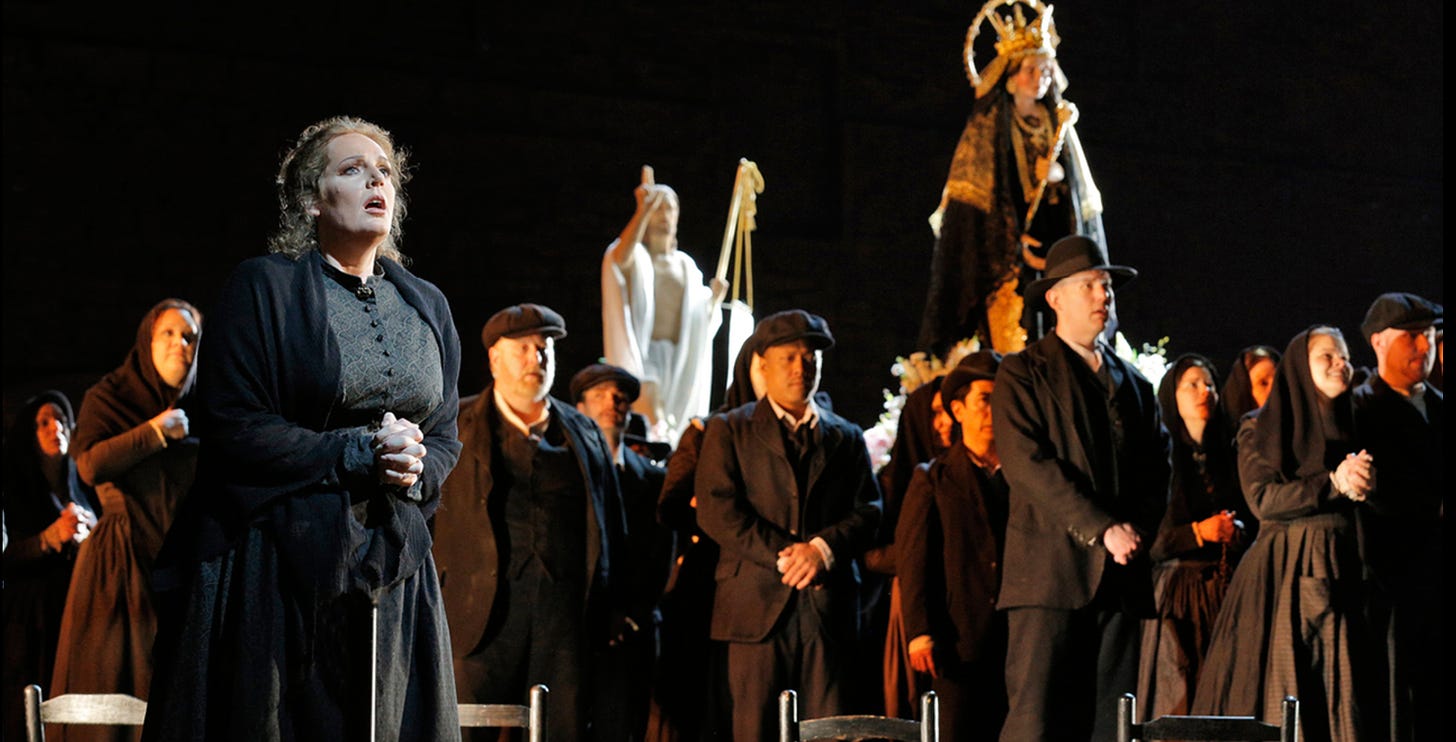
Today we’re listening to…
The Easter Hymn from Pietro Mascagni's opera Cavalleria Rusticana. No matter what we believe in, it’s hard to deny the beauty behind this piece – in its music and meaning. It is Easter morning in a 19th-century Italian village. Santuzza’s character sings the Easter Hymn in this excerpt, also referred to as both “Regina Coeli” and “Inneggiano”. She is singing to herself as her Sicilian village takes part in Easter festivities.
“Inneggiamo, il Signor non è morto” — “We rejoice that our Savior is living!”
We rejoice that our Savior is living!
He all-glorious arose from the dead;
Joys of heaven the Lord to us giving,
All the sorrows of darkness are fled!
🎧 Listen here (6 minute listen), the German soprano Julia Varady (singing the role of Santuzza) with The London Opera Chorus and The National Philharmonic conducted by Gianandrea Gavazzeni
Here are some other interpretations of the piece:
Maria Callas
Giulietta Simionato
Ebe Stignani
Fiorenza Cossotto
Renata Tebaldi
Jessye Norman
Elīna Garanča
Franco Zeffirelli did a film version of the full piece that features Domingo, Obratsova, Fedora Barbieri, and Renato Bruson. It’s a bit over the top, and you’ll find better vocals elsewhere, but it’s a solid introduction to this short piece.
Cavalleria Rusticana has so much goodness packed in such a short time. Its first performance in 1890 was a huge success, with Mascagni taking forty curtain calls!
This opera is most frequently staged together with another verismo work (verismo was a realist style of opera that emerged in Italy in the 1890s), Pagliacci, composed in 1892 by Ruggero Leoncavallo. These two operas are often associated with one another, often being referred to by the abbreviation “Cav/Pag”.
It is Easter morning in a Sicilian village. Turiddu sings of his love for Lola, wife of Alfio. Lolo and Turiddu had been a couple before he joined the army, but when he returned, he found her married to Alfio. Distraught about losing Lola, he seduces Santuzza but now has abandoned her and rekindled his relationship with Lola. Santuzza’s heart is broken, and she tries to win back Turiddu. Crazy jealous, she tells Alfio about Lola and Turridu. Alfio challenges Turridu to a duel. They both run off to battle, and a couple of moments later, a villager screams out that Turridu has been murdered.
Santuzza is sadly viewed negatively by the village because of her time with Turiddu and considers herself unworthy to enter the church for the Easter service. At this point in the opera, the famous Easter Hymn is sung by the villagers and by Santuzza. I like to think that we can take away some meaning from this piece given Santuzza’s situation — that no matter what we’ve done in the past, it does not define who we are now. And that Santuzza and the villagers are a community when celebrating Easter together, even if only for a brief moment.
Does this sound familiar? If yes, you might have heard this music in The Godfather Part III.
Thank you for reading (and listening),
Michele
❤️ If you enjoyed this selection, hit the heart to like it. It helps others find Opera Daily.



Another solid interpretation by Elina Garanča from 2019!
https://www.youtube.com/watch?v=X18Wr3mRjp8
Mascagni made a recording I had w/Gigli and LaScala that is notable and introduces CAV on that Angel/Seraphim LP. The recent Met version of CAV was awful with bare tables and not much else.